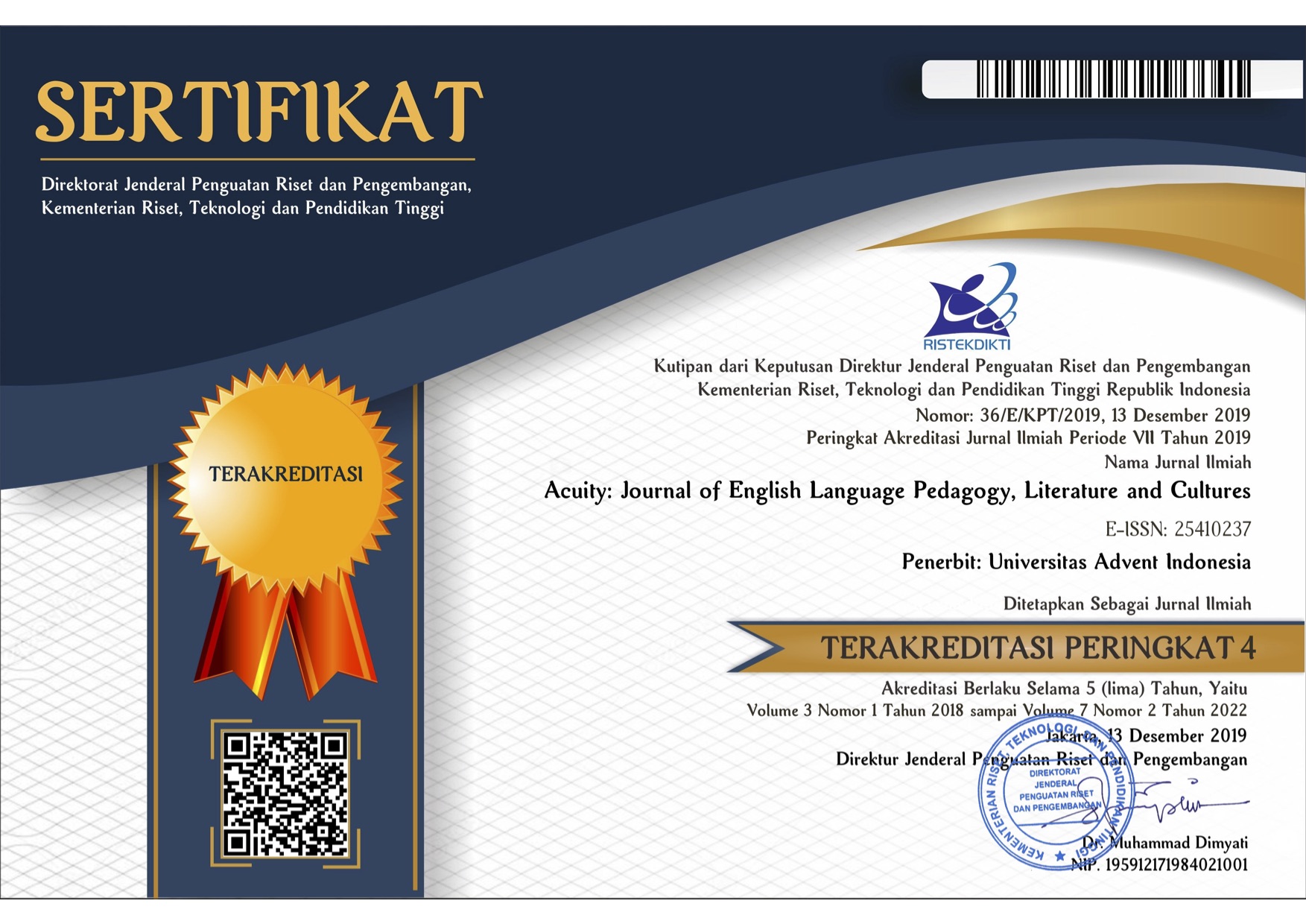Kemampuan Matematika Siswa Indonesia Berdasarkan TIMSS
Kata Kunci:
literasi matematika, penelitian kualitatif, sekolah menengah pertama, sekolah dasarAbstrak
TIMSS adalah singkatan dari Trends in International Mathematics and Science Study. Kegiatan ini bertujuan untuk mengukur kemampuan matematika dan sains siswa di negara peserta. Indonesia adalah salah satu negara peserta TIMSS. Tulisan ini bertujuan untuk mengetahui kemampuan matematika siswa di Indonesia serta beberapa faktor yang dapat meningkatkan kemampuan matematika siswa. Metode yang digunakan adalah penelitian deskriptif hasil TIMSS tahun 1999 hingga tahun 2015. Hasil penelitian ini menunjukkan bahwa kemampuan siswa Indonesia masih berada pada tingkat rendah (siswa Indonesia hanya mampu menyelesaikan soal matematika sederhana) serta terdapat beberapa faktor yang perlu diperhatikan oleh pemerintah, sekolah, dan orang tua agar dapat meningkatkan kemampuan matematika siswa Indonesia.
Unduhan
Referensi
Foundation, N. S. (2002). S Chool M Athematics and S Cience P Rograms (Vol. 9, Issue 6).
Hooper, M., Mullis, I. V. S., Martin, M. O., & In. (2013). TIMSS 2015 Context Questionnaire Framework Martin. In TIMSS 2015 Assessment Frameworks. http://search.ebscohost.com/login.aspx?direct=true&db=eric&AN=ED545250&site=ehost-live
Ina V.S. Mullis, Michael O. Martin, Pierre Foy, and A. A. (2012). Timss 2011 International Results in Mathematics. In TIMSS & PIRLS International Study Center (Vol. 2012, Issue 136). http://www.pubmedcentral.nih.gov/articlerender.fcgi?artid=3295935&tool=pmcentrez&rendertype=abstract
Ina V.S. Mullis, Michael O. Martin, Pierre Foy, and A. A. (2015). Timss 2015 International Results in Science Saved. Distribution of Science Achievement. http://timss2015.org/timss-2015/science/student-achievement/distribution-of-science-achievement/
International Association for the Evaluation of Educational Achievement. (2019). TIMSS 2019 Assessment Framework.
Kuswanti, Y., Setiawani, S., Diah, N., Lestari, S., Matematika, P., Keguruan, F., & Unej, U. J. (2014). Analisis Soal Dalam Buku Siswa Matematika Kurikulum 2013 Untuk Sekolah Menengah Pertama Kelas VII Berdasarkan Dimensi Kognitif Trends International Mathematics And Science Study ( TIMSS ) ( Analysis Of Test Items In Student Mathematics Text Book 2013 Curr. Artikel Ilmiah, 3, 1–5.
Lighting, I. L. U. (2013). TIMSS 1999 Mathematics Report. In Most.
Mullis, I.V.S, Martin, M. O., & Foy, P. (2004). Students’ backgrounds and attitudes toward mathematics. In TIMSS 2007 International Mathematics Report. http://isc.bc.edu/timss2003i/mathD.html
Mullis, Ina V S, Martin, M. O., Gonzalez, E. J., & Chrostowski, S. J. (2004). TIMSS 2003 International Mathematics Report. In Boston, MA: Boston. https://doi.org/10356/15300
Mullis, Ina V S, Martin, M. O., Ruddock, G. J., Sullivan, C. Y. O., & Preuschoff, C. (2011). TIMSS 2011 Assessment Frameworks.
Sari, D. C. (2015). Karakteristik Soal TIMSS. Seminar Nasional Matematika Dan Pendidikan Matematika Uny, 303–308.
Thomson, S., Wernert, N., O’grady, E., & Rodrigues, S. (2017). Reporting Australia’s results. www.acer.edu.au
##submission.downloads##
Diterbitkan
Cara Mengutip
Terbitan
Bagian
Lisensi
Penulis yang mempublikasikan naskahnya di jurnal ini menyetujui hal-hal berikut:
- Hak cipta tetap pada penulis, penulis memberikan kepada jurnal hak penerbitan pertama dan sekaligus melisensi karyanya mengikuti Creative Commons Attribution License yang mengizinkan orang lain untuk berbagi karya dengan penghargaan terhadap hak kepenulisan dan penerbitan pertama di jurnal ini.
- Penulis bisa mengikuti kontrak tambahan lain untuk distribusi non-ekslusif bagi karyanya tersebut (contoh: mempostingnya ke repositori institusi atau menerbitkannya dalam sebuah buku), dengan penghargaan terhadap penerbitan pertama di jurnal ini.
- Penulis diizinkan dan didorong untuk mem-posting karya mereka online (contoh: di repositori institusi atau di website mereka) sebelum dan selama proses penyerahan, karena dapat mengarahkan ke pertukaran produktif, seperti halnya sitiran yang lebih awal dan lebih banyak dari karya yang diterbitkan. (Lihat The Effect of Open Access).








